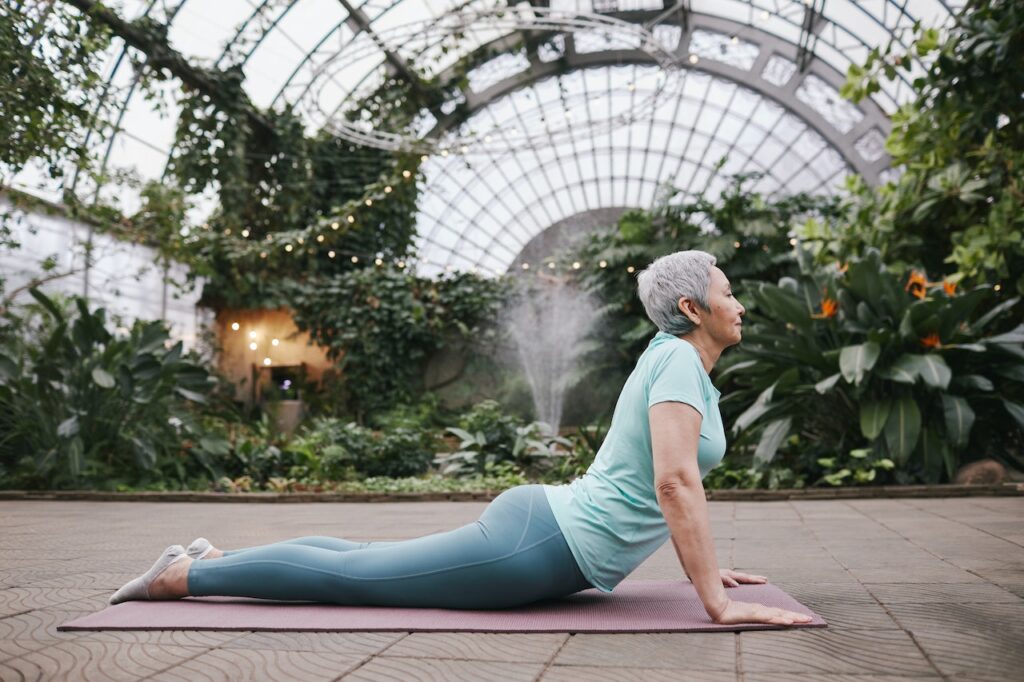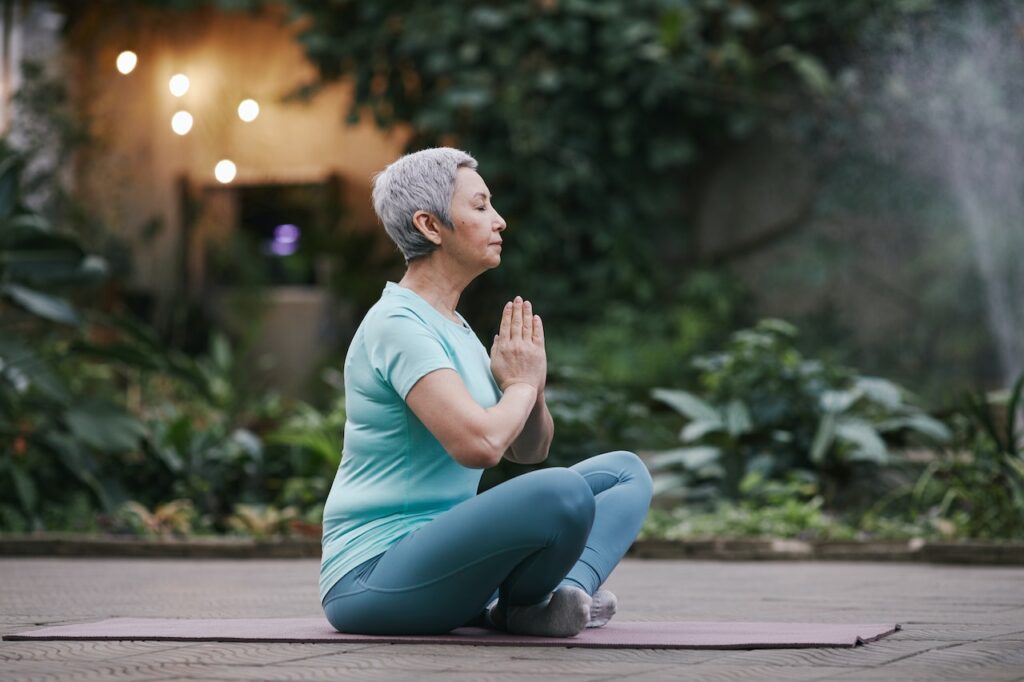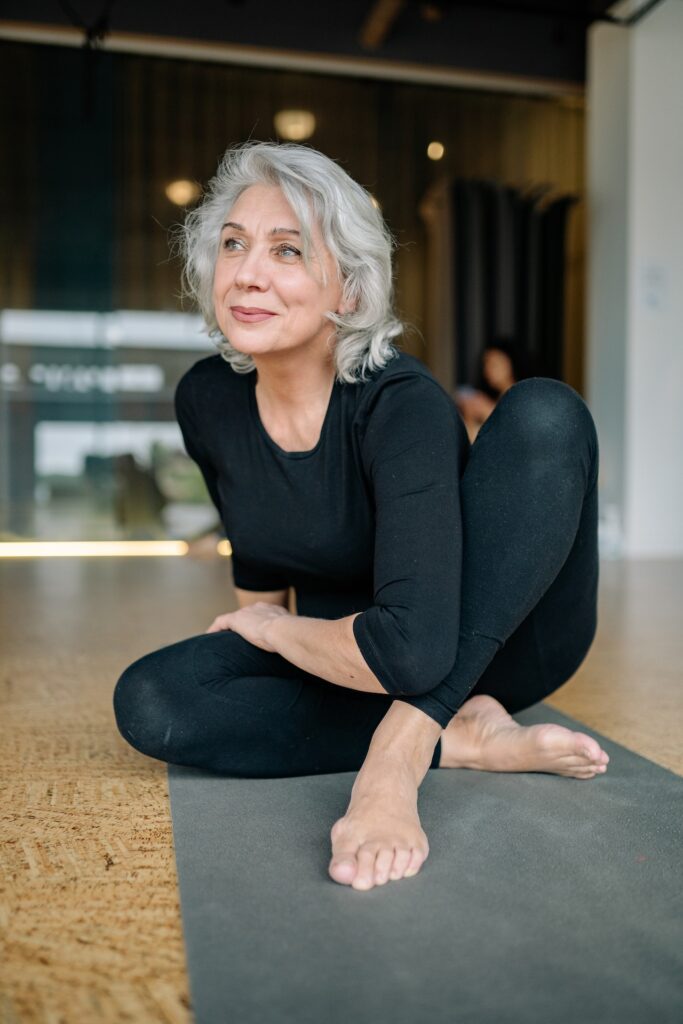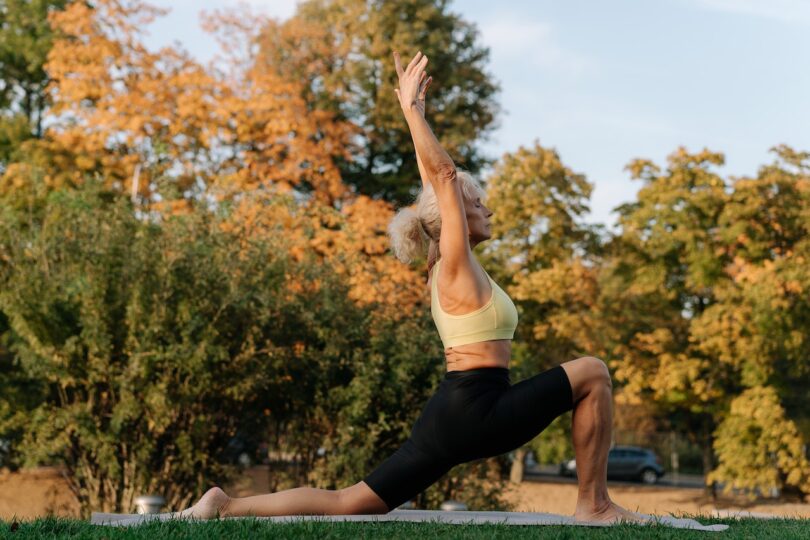Introduction
Benefits of yoga for seniors

Yoga is a great form of exercise for people of all ages, but it can be especially beneficial for seniors. Not only can it improve flexibility, balance, and strength, but it can also reduce stress and promote overall well-being. If you’re a senior who’s interested in trying yoga, it’s important to choose a class that’s suitable for your age and ability level. Here are some tips and techniques for getting the most out of a yoga practice as a senior.
Tips for Getting the Most Out of a Yoga Practice as a Senior

Choose a class that’s appropriate for your age and ability level
Choose a class that’s appropriate for your age and ability level. Many studios offer classes specifically for seniors, which may be more suitable for your needs. Look for classes that are labeled as “gentle,” “restorative,” or “chair yoga.” These classes are usually slower-paced and involve fewer standing poses, which can be easier on the joints.
Talk to your instructor before class
Talk to your instructor before class. If you have any health conditions or injuries, it’s important to let your instructor know before class so they can modify poses or offer alternative options. They can also give you guidance on which poses to avoid or be cautious with.
Start slowly and listen to your body
Start slowly and listen to your body. Yoga is not a competitive sport, and it’s important to go at your own pace. If you’re new to yoga, start with a beginner’s class or a private lesson to get a feel for the practice. Don’t be afraid to rest when you need to, and stop if you feel any pain.
Use props to make poses more comfortable
Use props to make poses more comfortable. Props such as blankets, blocks, and straps can help support the body and make poses more accessible. Don’t be afraid to use them – they’re there to help you.
Focus on your breath
Focus on your breath. The breath is a key aspect of yoga, and it can help you stay present and focused during your practice. Pay attention to the sensation of the breath moving in and out of your body, and try to match your movements to your breath.
Stay hydrated
Stay hydrated. Yoga can be physically demanding, especially in a hot or humid environment. Be sure to drink plenty of water before and after class to stay hydrated.
Modify poses as needed
Modify poses as needed. If you’re struggling to get into a pose or if it’s causing you discomfort, don’t be afraid to modify it. You can always ask your instructor for guidance on how to modify a pose, or you can use props to make it more comfortable. The most important thing is to listen to your body and do what feels right for you.
Don’t be afraid to try new things
Don’t be afraid to try new things. Yoga is a practice that evolves over time, and it’s okay to try new poses and techniques. Just be sure to listen to your body and respect your limits.
Find a class that fits your schedule
Find a class that fits your schedule. If you’re a busy senior, it can be tough to find time to fit in a yoga class. Look for classes that are offered at a time that works for you, or consider trying online classes that you can do at home.
Make yoga a regular part of your routine
Make yoga a regular part of your routine. The more you practice yoga, the more you’ll get out of it. Try to make it a regular part of your weekly routine, and you’ll start to see and feel the benefits.
Additional Considerations for Seniors Practicing Yoga

Overall, yoga can be a wonderful form of exercise for seniors. It’s low-impact, gentle on the joints, and can be modified to suit your needs and abilities. By following these tips and techniques, you can get the most out of your yoga practice and enjoy all the benefits it has to offer.
Don’t worry about what others are doing
Don’t worry about what others are doing. It’s easy to get caught up in comparing yourself to others in a yoga class, especially if you’re new to the practice. But it’s important to remember that everyone is at a different place in their journey. Focus on your own practice and do what feels right for you.
Find a class that resonates with you
Find a class that resonates with you. Yoga comes in many different styles and traditions, and it’s important to find a class that resonates with you. Some styles may be more physically demanding, while others may be more meditative. Experiment with different styles and teachers to find what works best for you.
Wear comfortable clothing
Wear comfortable clothing. It’s important to wear clothing that allows you to move freely and comfortably during your yoga practice. Look for stretchy, breathable fabrics and avoid anything too loose or restrictive.
Use caution with inversions
Use caution with inversions. Inversions, such as headstands and shoulder stands, can be challenging and may not be suitable for everyone. If you’re interested in trying inversions, be sure to work with a skilled instructor and listen to your body.
Don’t push yourself too hard
Don’t push yourself too hard. It’s important to challenge yourself in your yoga practice, but it’s equally important to know your limits and respect your body. If you feel tired or sore, take a break or modify the pose.
Take care of your body before and after class
Take care of your body before and after class. Before class, it’s a good idea to do some light stretching to loosen up the muscles. After class, take some time to rest and relax in savasana, the final resting pose. You can also use props, such as blankets and bolsters, to support the body and enhance relaxation.
Find a teacher you connect with
Find a teacher you connect with. The relationship with your yoga teacher can have a big impact on your practice. Look for a teacher who is knowledgeable, supportive, and who you feel comfortable with.
Don’t be afraid to ask questions
Don’t be afraid to ask questions. If you have questions or concerns about your practice, don’t be afraid to ask your teacher or fellow students for guidance. Yoga is a journey of self-discovery, and it’s okay to seek help along the way.
Take breaks as needed
Take breaks as needed. Yoga can be physically demanding, especially for seniors. Don’t be afraid to take breaks or rest when you need to. You can also consider taking a break from your practice for a few days if you’re feeling particularly sore or tired.
Have fun!
Have fun! Above all, remember to enjoy your yoga practice. It’s a time to connect with your body and mind and to find a sense of peace and relaxation. Don’t take yourself too seriously, and have fun with your practice.
Conclusion

In conclusion, yoga can be a wonderful form of exercise for seniors. It’s low-impact, gentle on the joints, and can be modified to suit your needs and abilities. By following these tips and techniques, you can get the most out of your yoga practice and enjoy all the benefits it has to offer. Whether you’re new to yoga or have been practicing for years, there’s always more to learn and discover in this ancient and transformative practice. So, try to incorporate yoga into your daily routine and see the positive changes it brings to your physical and mental well-being.
Read more:
The Top 5 Yoga Studios and Classes for Seniors in the United States
The Latest Yoga Trends for Seniors: What’s Hot and What’s Not
The Top 10 Yoga Poses for Seniors to Improve Balance and Stability
Is yoga suitable for seniors?
Yes, yoga is a suitable form of exercise for seniors. It can improve flexibility, balance, and strength, and it can also reduce stress and promote overall well-being. It’s important to choose a class that’s appropriate for your age and ability level, and to talk to your instructor before class to discuss any health conditions or injuries.
What should I wear to a yoga class?
It’s important to wear comfortable, breathable clothing that allows you to move freely during your practice. Avoid anything too loose or restrictive, and consider wearing layers if you tend to get cold or hot easily. You may also want to bring a towel and water bottle to class.
Can I use props in a yoga class?
Yes, props such as blankets, blocks, and straps can be very helpful in a yoga class, especially for seniors. They can help support the body and make poses more accessible. Don’t be afraid to use props – they’re there to help you.
Is it normal to feel sore after a yoga class?
It’s normal to feel some soreness after a yoga class, especially if you’re new to the practice. This is a sign that your muscles are being strengthened and stretched. However, if you experience excessive soreness or pain, be sure to speak to your instructor or a healthcare professional.
How often should I practice yoga as a senior?
The frequency of your yoga practice will depend on your personal goals and needs. Some seniors may benefit from practicing yoga every day, while others may prefer a few times a week. It’s important to listen to your body and do what feels right for you.








Leave a Comment